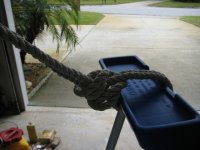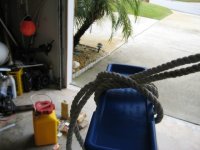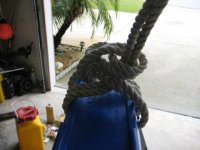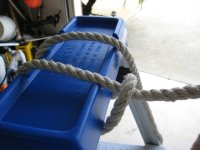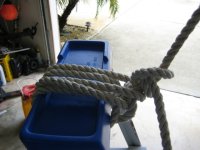marco422
New member
- Joined
- Sep 25, 2008
- Messages
- 103
- Reaction score
- 0
- C Dory Year
- 2007
- C Dory Model
- 16 Cruiser
- Vessel Name
- Gaiasika
I usually leave the loop in my mooring lines attached to my boat cleat and when I dock I fake some sort of secure knot to the bull rail, but I am curious about the proper technique. I saw a tour boat operator in Hot Springs Cove tie a secure knot to the bull rail in half a second (his hands were a blur) but before I could overcome my male reluctance and ask him how, he had untied and departed again.
Can someone enlighten me on the secret technique?
Can someone enlighten me on the secret technique?

